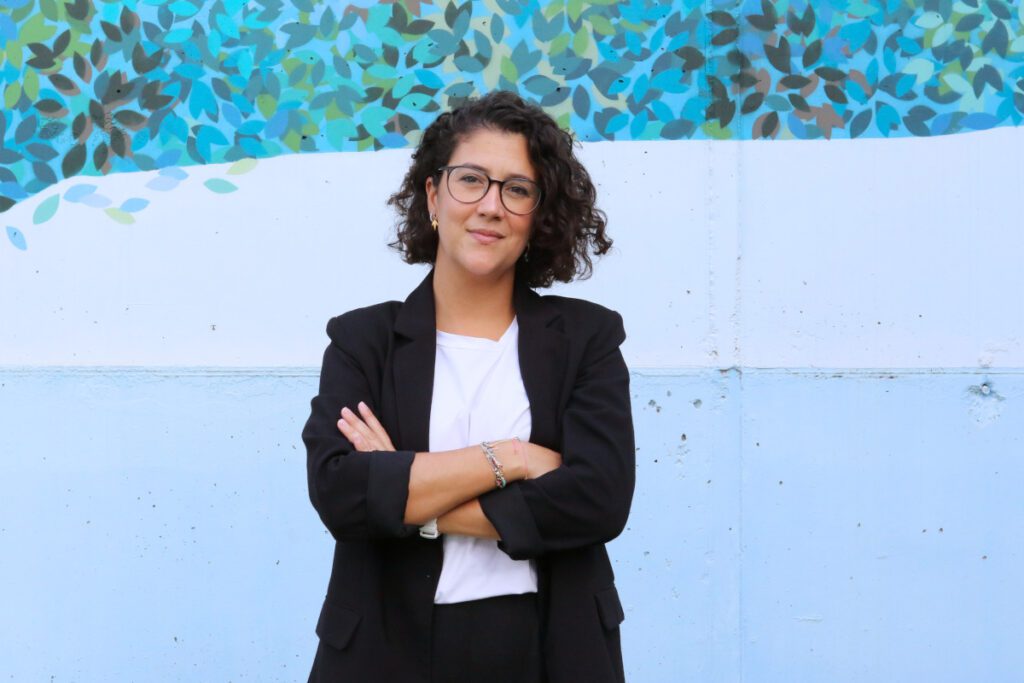IBEC principal investigator Zaida Álvarez has received funding from the US National Institutes of Health (NIH) to develop stem cell-based models of the spinal cord. The project, coordinated by Northwestern University with the participation of IBEC and IDIBELL, will make it possible to study neurodegenerative diseases and develop new treatments for spinal cord injuries and other neurodegenerative pathologies.

IBEC researcher Zaida Álvarez Pinto will participate as principal investigator in a project funded by the US National Institutes of Health (NIH). The project, coordinated by Professor Evangelos Kiskinis of Northwestern University in Chicago, also involves Dr Alberto Ortega of the Bellvitge Institute for Biomedical Research (IDIBELL). The aim is to investigate how the extracellular matrix of neurons changes at different stages of development in order to improve understanding of neurodegenerative diseases.
The project, called Refining iPSC-Based Spinal Cord Model Systems by Fabricating Developmentally Programmed Extracellular Matrix Cues ‘, will last five years and has a budget of more than $2.7 million, of which IBEC will receive more than $600,000.
Cell reprogramming technologies and induced pluripotent stem cells (iPSCs) have revolutionised the study of the human central nervous system, enabling the creation of models to study neuronal development and neurological disease. However, culturing iPSC-derived neurons in vitro remains a challenge as they do not reach the maturity required to study neurodegenerative diseases. This is partly due to the lack of an adequate extracellular matrix (ECM), the structure that supports and regulates cells in the body.
In the long term, the advances made in the functionalisation of matrices and tissue constructs could provide a new basis for effective treatments of spinal cord injuries and other neurodegenerative diseases.
Zaida Álvarez Pinto
This project proposes to address this challenge by studying how the ECM changes at different stages of development, from infancy to old age, using the spinal cord of mice and humans. Based on these findings, the researchers will design artificial arrays that mimic the natural ECM to improve the maturation and ageing of neurons in the laboratory. These advances will enable the development of better iPSC-based spinal cord models with applications in the study of disease and the development of therapies.
Álvarez’s team at IBEC, the Biomaterials for Neural Regeneration group, will play a key role in the project. They will develop functionalised arrays with ECM proteins to enhance the maturation of human motor neurons in 2D cultures and design 3D platforms to mature spinal cord organoids. They will also carry out studies on the morphology, mechanics and degradation of the hydrogels that will act as substrates, and analyse the signals released by the ECM.
According to Álvarez, ‘This opportunity will allow us to deepen our study the of the extracellular matrix of the spinal cord and its influence on neural maturation. In the long term, the advances made in the functionalisation of matrices and tissue constructs could provide a new basis for effective treatments of spinal cord injuries and other neurodegenerative diseases. ‘
The project was funded though the R01 programme by NIH, one of the largest public funders of biomedical research in the world, which supports high-impact, independent research in specific areas of scientific interest. This type of funding allows early-stage researchers to explore innovative solutions to biomedical challenges.
Research reported in this publication was supported by the National Institute on Aging of the National Institutes of Health under Award Number R01AG086270.
This content is solely the responsibility of the authors and does not necessarily represent the official views of the National Institutes of Health’s National Institute on Aging.







